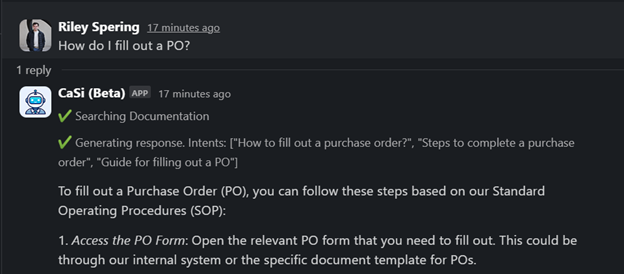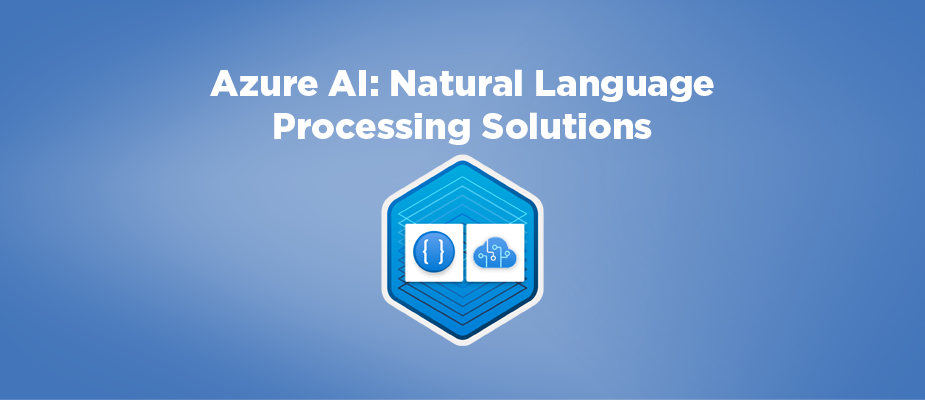Source: Develop natural language solutions in Azure – Training | Microsoft Learn
Natural Language Processing (NLP) refers to artificial intelligence that can see, hear, speak with, and understand users. Models with NLP can be applied to input such as text, audio, and real-time speech. With Azure AI’s Language service, we can enable applications to understand us in dynamic ways.
At DMC, we pride ourselves on our vast skill set. AI solutions are just a small part of our application development services. From IoT solutions to custom software from scratch, we are more than ready to tackle any project that comes our way. In this post, we’ll explore the fundamentals of Azure AI’s NLP, dive into key features like text analysis, question answering, and conversational language understanding, and showcase how DMC can craft tailored NLP solutions to meet your business needs.
What is Natural Language Processing?
Natural Language Processing empowers computers to understand, interpret, and generate human language in a way that’s both intuitive and contextually accurate. Azure AI’s NLP suite enables businesses to process vast amounts of text, extract actionable insights, and create intelligent applications that enhance customer interactions and streamline operations.
Building robust NLP models from scratch is complex, requiring extensive training and computational resources. Azure AI simplifies this process with pre-trained models that deliver high performance out of the box. At DMC, we customize these models to fit your specific requirements, making it easy to integrate NLP into your applications. By provisioning an Azure AI Language resource in your Azure Subscription, you can manage and fine-tune your NLP solution effortlessly through the Azure Portal.
What Can Azure AI’s Language Service Do?
Azure AI’s Language Service offers a range of powerful capabilities, including:
- Text Analysis: Extracting sentiment, key phrases, entities, and language from text.
- Question Answering: Providing precise answers to user queries based on documents or knowledge bases.
- Conversational Language Understanding: Interpreting user intents and entities for intelligent chatbots.
Let’s explore these three core NLP capabilities in detail:
1. Text Analysis
Text analysis enables systems to extract meaningful insights from unstructured text, such as customer feedback, social media posts, or documents.
How Text Analysis Works
Azure’s Text Analytics API processes text inputs using advanced machine learning models to perform tasks like:
- Sentiment Analysis: Determining whether text expresses positive, negative, or neutral sentiment.
- Key Phrase Extraction: Identifying the main ideas or topics in a text.
- Entity Recognition: Detecting people, places, organizations, or other entities.
- Language Detection: Identifying the language of the text, supporting multiple languages.
The API handles complex scenarios, such as noisy or ambiguous text, and delivers structured JSON outputs for easy integration into applications.
Use Cases for Text Analysis
- Customer Insights: Analyzing reviews to understand customer sentiment and identify product issues.
- Content Moderation: Filtering inappropriate comments on social platforms.
- Market Intelligence: Extracting trends from survey responses to guide business strategy.
With AI Text Analysis, we can use text analysis to build solutions that transform raw text into actionable insights that help businesses get the most out of their knowledge base.
2. Question Answering
Question answering allows systems to provide accurate, context-aware responses to user queries based on documents or custom knowledge bases.
How Question Answering Works
Azure’s question answering capabilities involve using deep learning models to comprehend questions and extract answers from structured or unstructured data. Key steps include:
- Context Understanding: Analyzing the query and source content to identify relevant information.
- Answer Retrieval: Extracting precise answers, often with confidence scores.
- Knowledge Base Integration: Supporting custom datasets, such as company manuals or FAQs.
In short, a question answering system involves integrating with existing AI models, such as gpt-4o, to create a more “human-like” interface with your knowledge base. Later, we will explore a more in-depth example of a system built by DMC that does this.
Use Cases for Question Answering
- Customer Support: Chatbots answer FAQs, reducing support ticket volumes.
- Employee Productivity: Staff can access instant answers from internal documentation.
- Education: E-learning platforms provide students with responses to their questions based on course materials.
DMC excels at building question-answering solutions that enhance efficiency and user experience, customized to your organization’s unique data and workflows.
3. Conversational Language Understanding
Conversational Language Understanding (CLU) powers intelligent chatbots and virtual assistants by interpreting user intents and extracting entities from natural language inputs.
How Conversation Language Understanding Works
Azure’s CLU service analyzes conversational inputs to:
- Intent Classification: Identify the user’s goal, such as booking a service or requesting information.
- Entity Extraction: Recognize specific details, like dates, locations, or product names.
- Multi-Turn Conversations: Maintain context across multiple exchanges for seamless interactions.
Use Cases for Conversational Language Understanding
- Retail: Chatbots assist with product searches, order tracking, or returns.
- Healthcare: Patients schedule appointments or access medical advice via conversational bots.
- Smart Devices: Voice assistants process commands to control IoT devices.
DMC’s knowledge of CLU allows us to create conversational AI solutions that feel natural and intuitive, driving more impactful engagement with users in contrast to traditional solutions.
Real-World Solution: DMC AI Chatbot
To demonstrate the power of Azure AI NLP, let’s walk through an AI Chatbot solution that was implemented in-house here at DMC.

The Challenge
DMC has a large and complex knowledge base that has been accumulated over our 20+ years of experience. We face two problems with this:
- Finding answers in this knowledge base can take time for those unfamiliar with its structure.
- A common practice is to reach out to large groups in Slack to ask common questions which results in:
- Downtime between the question being asked and it being answered.
- Pulling employees from higher priority tasks to answer previously answered questions.
The Solution
DMC was able to propose and execute a solution that includes:
- Knowledge Base Integration: Using Azure resources, we were able to take our existing knowledge base and transform it into a structure that is retrievable by our chatbot.
- Custom AI Chatbot: Azure can provide a pre-built AI model that we were able to customize to our exact needs by adjusting prompts, choosing its personality, and providing it with DMC-specific terms for better comprehension. The chatbot is able to take a user’s question, answer it with the existing documentation, and even provide the direct source that it retrieved the information from!
- Slack Integration: Our chatbot is accessible in Slack, our primary workplace communication platform, making it easy to use for our existing employees, with little to no guidance on getting started.
Implementation
To build this solution, we utilized our Azure subscription to provision the necessary resources and integrate them with available APIs to fully integrate them into our workplace. This required us to do the following:
- Instantiate an Azure Search Service: For our chatbot to become an expert on DMC, we had to provision an Azure Search Service. This service takes our existing knowledge base in Confluence and transforms it into a searchable format by indexing every piece of information available. This required hitting the API to our Confluence instance.
- Provide Chatbot with the Knowledge Base: Hooking up our chatbot to our search service allows it to submit keyword-based queries and choose results that best answer a question asked by a DMC employee.
- Customizing the Chatbot: To limit unpredictable behavior, we needed to clearly define the process for handling unclear questions and multiple questions in one prompt. We also provided the chatbot with definitions for common acronyms and terms used exclusively at DMC to enhance its comprehension skills.
- Integrate with Existing Resources: DMC employees use Slack daily, so it was essential that we integrate our new chatbot with it. This makes the chatbot easily accessible to our employees.
- Keep the Chatbot Informed: Our knowledge and documentation are constantly expanding, which means we must keep our chatbot up to date. This meant that we needed to implement a function that is run once per week to help our chatbot keep up!
Benefits
This solution helped solve the issues shown earlier:
- Quick Knowledge Retrieval: With the new chatbot, users can ask questions and get instant feedback, without having to search Confluence manually.
- Reduced Downtime: With instant feedback, employees experience less downtime before getting answers.
- Manage Employee Priorities: Employees can spend less time asking and answering previously answered questions, which translates into more time available for higher-priority tasks.
Ethical Considerations
Deploying NLP solutions requires responsible practices to address privacy, bias, and transparency. At DMC, we ensure ethical AI use by considering the following:
- Bias Mitigation: Regularly auditing models to prevent unfair treatment across diverse customer groups.
- Data Privacy: Implementing end-to-end encryption and anonymizing data in compliance with GDPR and other regulations.
- Transparency: Clearly informing customers when they interact with AI chatbots.
- Human Oversight: Incorporating human-in-the-loop review for complex queries or sensitive interactions.
As a Microsoft partner, DMC adheres to Microsoft’s responsible AI guidelines, ensuring our NLP solutions are ethical and trustworthy. More details on Microsoft’s guidelines can be found in their documentation here.
Why DMC?
At DMC, we blend our technical expertise with a deep understanding of your business goals. Our experience with Azure AI’s NLP enables us to deliver customized solutions that drive efficiency, enhance customer experiences, and unlock new opportunities. From retail to healthcare, we’re equipped to tackle complex challenges across industries.
Let’s Recap
Azure AI’s NLP capabilities—text analysis, question answering, and conversational language understanding—offer endless possibilities for innovation. At DMC, we’re more focused on harnessing these tools to build tailored solutions that solve your unique challenges.
Ready to transform your business with Azure AI’s NLP? Contact us today to start your journey with DMC!







